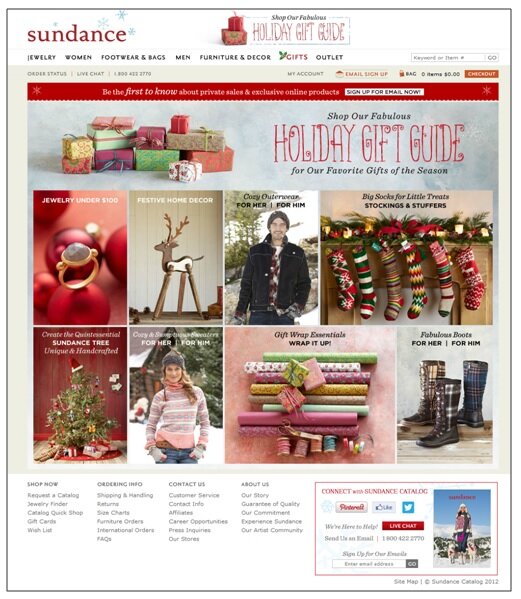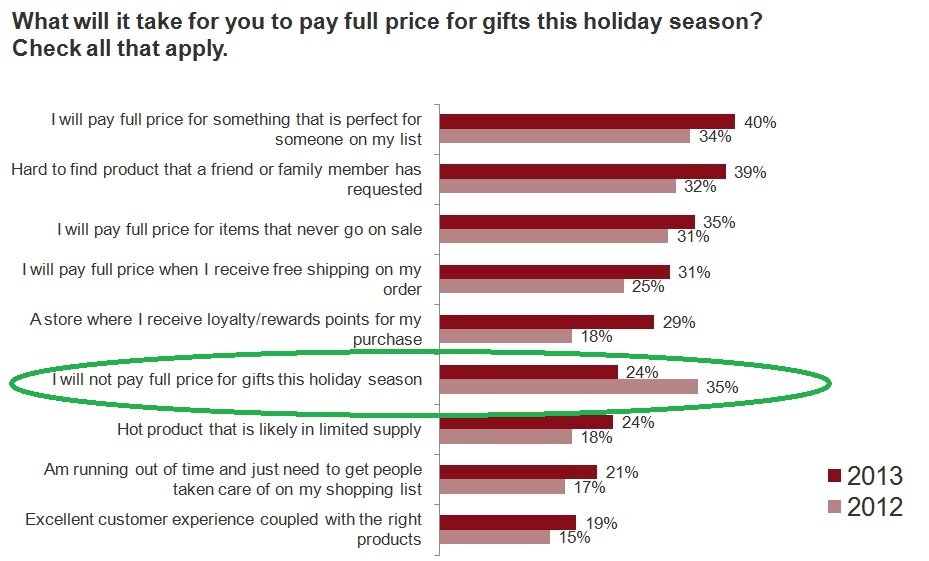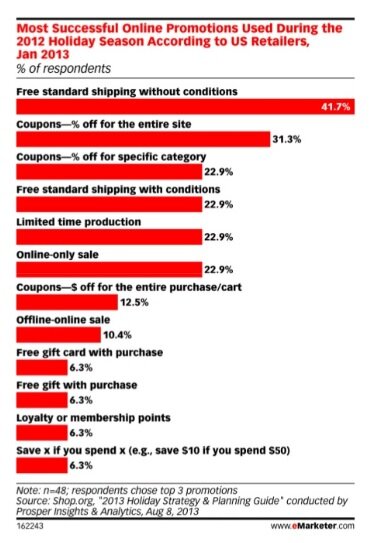Performance Index: merchants riding wave of growth into holidays
November 8, 2013 Leave a Comment
As the high-stakes holiday season kicks into overdrive, the latest data from the MarketLive Performance Index suggests merchants are well-positioned to see double-digit revenue gains.
In the third quarter, merchants saw improvement across a wide range of performance metrics. Year-over-year visits increased more than 15%, and with the add-to-cart rate and conversion rate both seeing modest gains, overall revenue rose 17%. The average order size also nudged upwards by 1.5%, suggesting merchants needn’t adopt bargain-basement pricing strategies to win new business.
Among the key findings:
Mobile sales — from both smartphones and tablets — are growing. Mobile continues to play an ever-more-crucial role in the shopping experience. More than a third of all traffic originates with smartphones or tablets, driving 17% of total revenue. While smartphone performance overall lags tablet metrics, smartphone revenue has jumped by an impressive 65% year over year to 4% of all online sales — a faster growth rate than tablet sales, which increased 39%, to 13% of the total.

The data suggests that merchants need to account for both device types as they plan their mobile strategies for 2014. Considerations include:
-
Whether to adopt responsive design. While there are potential pitfalls to responsive design, for many merchants it represents the most efficient opportunity to deliver device-optimized experiences for consumers. If merchants invest to implement responsive design correctly, they can reap double-digit conversion gains for mobile devices, as well as improving SEO.
-
How to “flip” to mobile-first email. By some counts, more than half of email is now read via mobile devices, which means that merchants must tailor their messaging for maximum mobile utility. Designing appropriately-sized “tap targets”, streamlining Subject: lines and ensuring video and animation elements render properly on mobile platforms should all be on the checklist.
Social’s role is small — but potentially important. There’s no denying that compared with mobile, social media affords merchants a less direct path to revenues. Index data reveals that while just 1 to 2% of traffic and revenue can be directly attributable to social media, even those small percentages represent substantial increases from the prior year. Social traffic grew 29%, while social revenue skyrocketed by 77% — suggesting that merchants deploying savvy social strategies will increasingly reap ROI rewards. In particular, merchants should:
-
Give social followers a holiday boost. To increase potential engagement and word-of-mouth buzz, merchants should offer social shoppers the means to interact with the brand around holiday promotions — whether by running a holiday-themed contest, offering them a sneak peek at Black Friday discounts or even giving them the opportunity to vote on what those discounts will be in the first place.
-
Entice brand “newbies.” Index data reveals that nearly three quarters of traffic to merchant eCommerce sites from social networks derives from first-time visitors, compared with the overall average of 61% first-time visitors. To engage these would-be brand enthusiasts, merchants should take pains to communicate their brand’s unique identity on social outposts. They should prominently post brand-defining product guarantees, return policies and shipping offers, and use social promotions to showcase the breadth and depth of their product offering. Lifestyle content that appeals to target audiences demonstrates the brand’s expertise, as with MarketLive merchant Stila Cosmetics, whose Pinterest profile demonstrates a passion for trend-setting fashion via boards displaying products used during New York Fashion Week and “We <3 Fashion,” a board of favorite apparel and makeup picks from around the Internet.

Download the full Index report for industry-specific metrics and further data. What metrics will you be watching this holiday season?

































Connect with us: